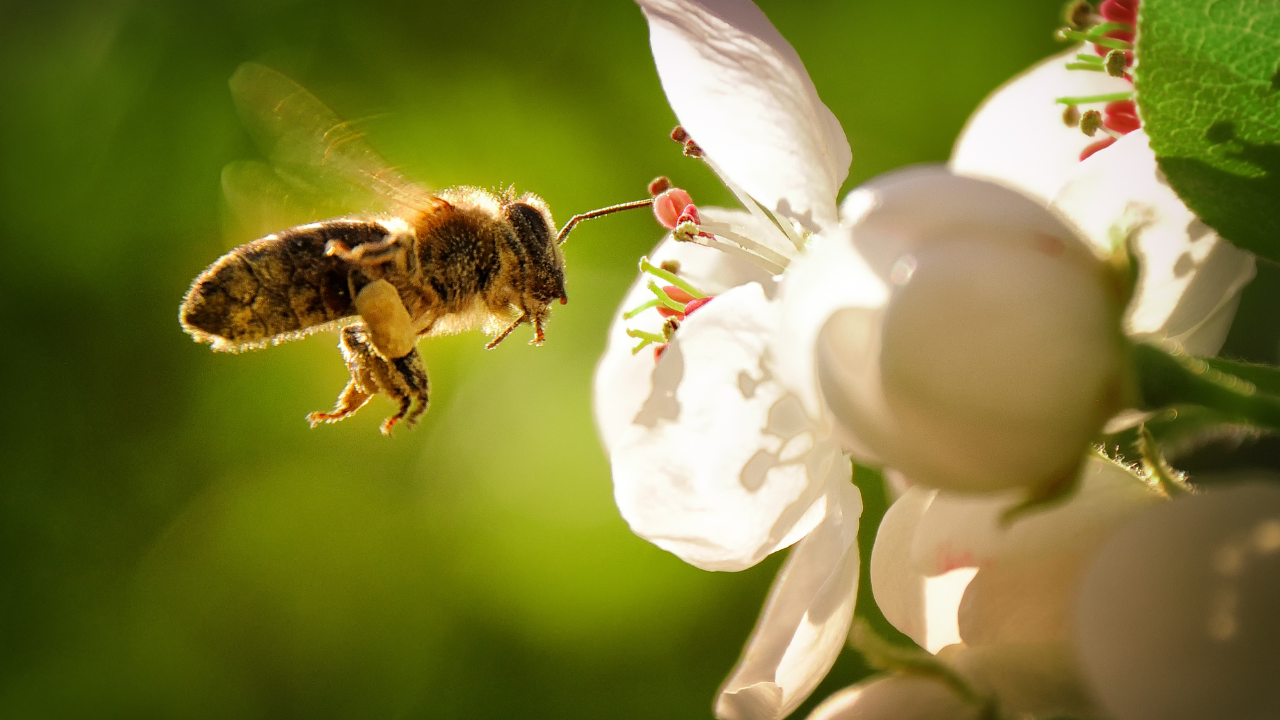The Secret Language of Bees: Decoding Their Intricate Communication System
"Bees communicate in a world of scent and vibration, their language is a symphony of smells and dances, a testament to the profound interconnectedness of nature."
Bees are incredible creatures with a sophisticated communication system that allows them to interact and coordinate within their hive and beyond. Their ability to convey information about food sources, hive locations, and potential threats is essential for their survival as a colony. In this blog post, we'll delve into the intricate world of bee communication, exploring the various methods they employ to share vital information with their fellow hive mates.
The Dance of the Honeybee:
One of the most fascinating forms of bee communication is the "waggle dance" performed by honeybees. This intricate dance involves precise movements and patterns that convey information about the location and quality of nectar sources. When a forager bee returns to the hive after finding a fruitful flower patch, it performs a waggle dance to share the valuable information with other worker bees. By carefully choreographing their movements, they indicate the direction, distance, and richness of the food source, allowing their hive mates to navigate directly to the desired location.
Pheromones: Chemical Messengers of the Hive:
Bees rely heavily on pheromones, chemical substances produced by their bodies, to communicate with one another within the hive. The queen bee produces a range of pheromones that regulate the behavior and cohesion of the colony. The queen's mandibular pheromone, for example, helps maintain social order and suppresses the development of reproductive abilities in worker bees. Additionally, the alarm pheromone is released when a bee senses danger or an intruder, triggering a defensive response from other members of the colony.
Bees also use pheromones to signal readiness for swarming, a natural reproductive process. The queen releases a swarm pheromone that encourages worker bees to follow her and establish a new colony. The scent of the pheromone guides the swarm to a temporary location while scout bees search for a suitable permanent site.
Vibrations and Sounds:
In addition to dances and pheromones, bees communicate through vibrations and sounds. Worker bees create specific vibrational signals known as "tremble dances" to communicate information about food quality, water sources, or the need for additional nest construction. These tremble dances are often performed on the surface of the honeycomb and are believed to transmit messages through physical vibrations that are sensed by neighboring bees.
Bees also produce various sounds within the hive. By buzzing their wings at specific frequencies, they create distinct hums and tones that convey meaning to their hive mates. For instance, a queen bee produces a "piping" sound to assert her dominance and maintain order in the colony. The collective buzz of worker bees can indicate a state of contentment and productivity, while changes in pitch and intensity may communicate alarm or aggression.
Beyond the Hive: Bee Communication in the Environment:
Bees' communication extends beyond the confines of the hive. During foraging expeditions, bees interact with other bees from different colonies and even with other pollinators. They communicate information about food sources through a process known as "dancing in the air." This behavior involves a combination of flight patterns and dance-like movements that communicate the location, quality, and abundance of nectar and pollen. By observing the dances of other bees, foragers can quickly assess the best locations for gathering resources.
Bees also exhibit "flower constancy," a behavior where they preferentially visit certain types of flowers. They remember the visual cues, scent, and rewards provided by particular flowers and communicate this information to their hive mates. This selective behavior maximizes their efficiency in pollination and resource gathering.
The Significance of Bee Communication
The intricate communication system of bees is of significant importance, both for their survival as a species and for the ecosystems they inhabit. Effective communication among bees enables them to efficiently gather food, defend their hive, and maintain social order within the colony. The secret language of bees is not only a marvel of nature but also a crucial factor in the success and sustainability of their populations.
Understanding the complexities of bee communication allows us to appreciate the remarkable intelligence and adaptability of these tiny creatures. It reminds us of the interconnectedness of all living beings and the vital role that bees play in the balance of our natural world.
However, bees are facing numerous challenges that threaten their populations. Habitat loss, pesticide exposure, climate change, and diseases are among the factors contributing to bee decline. It is crucial for us to take action to protect and support bee populations.
As individuals, we can create bee-friendly environments by planting native flowers and providing nesting habitats. Avoiding the use of pesticides and opting for organic and sustainable practices in our gardens and farms can also make a significant difference. Supporting local beekeepers and organizations dedicated to bee conservation is another impactful way to contribute.
On a larger scale, advocating for pollinator-friendly policies and promoting awareness about the importance of bees in our ecosystems can help drive change. By prioritizing the protection of bees and their habitats, we are safeguarding not only their future but also the health and diversity of our entire planet.
In conclusion, the secret language of bees is a testament to their remarkable abilities and the intricate web of communication that exists within their hives. Through dances, pheromones, vibrations, and sounds, bees convey vital information that ensures their survival and success. As stewards of the Earth, it is our responsibility to recognize the value of these incredible creatures and take action to protect and preserve them for generations to come.

